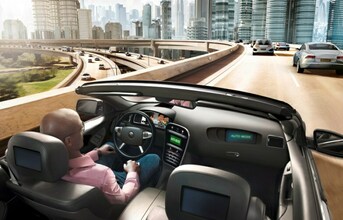
International automotive supplier Continental is taking on coordination of the "Ko-HAF - Cooperative Highly Automated Driving" combined research project. Here, cooperative refers to the interaction between several highly automated vehicles.
"The research initiative takes us a major step forward in the direction of automated driving, with road safety at the highest level being its essential basis. Ko-HAF researches not only the involvement of the driver in highly automated driving, but also cross-partner functions and communication between the highly automated vehicles", said Dr. Stefan Lüke, Ko-HAF Project Coordinator, and responsible for Advanced Driver Assistance Systems & Automation in the Advanced Engineering department in Continental's Chassis & Safety Division.
"Together with a consortium of automobile manufacturers, automotive suppliers and public partners, Ko-HAF was launched on June 1, 2015. Ko-HAF has a total budget of 36.3 million euros and is expected to run until November 2018. It is being supported by Germany's Federal Ministry for Economic Affairs and Energy (BMWi) as the first project within the framework of its new program "New Vehicle and System Technologies".
Highly automated driving while reading e-mails
The aim of the project is to research new systems and functions permitting highly automated driv-ing at higher speeds and in more complex situations. During highly automated driving, the driver no longer has to monitor the systems permanently and can instead leave the chore of driving to the vehicle for a certain time, freeing up time to read or write e-mails, for example.
However, the driver has to be able to take over the driving task within a certain time. For the time that the driver needs to do so, it is necessary for the vehicle to correctly assess its surroundings and the traffic situation. This is a particular challenge at higher speeds and in more complex scenarios. This is one of the tasks that Ko-HAF is looking into: the starting point is a backend solution in which the vehicles communicate with one another via a server, aided by mobile radio (LTE/UMTS).
The server collates and evaluates information about the vehicle surroundings, and makes it available to the vehicles in a consistent form. This method of forward-looking driving is necessary for high automation in more complex situations.
(Continued on the next page)


























